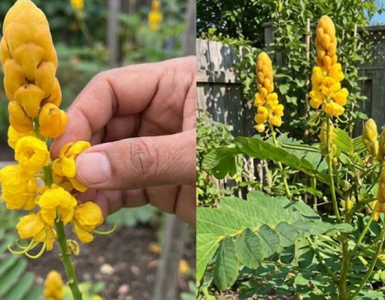Pine trees, with their majestic presence and distinct aroma, are not only beautiful elements of nature but also a source of sustenance in various ways. Surprisingly, almost every part of a pine tree is edible and can provide valuable nutrition if properly prepared and consumed. From the needles to the bark, let’s explore how you can incorporate different parts of a pine tree into your diet.
1.Pine Needles
Pine needles are not only edible but also packed with vitamin C and other antioxidants. They have a fresh, citrusy flavor and can be used in various culinary preparations, such as:
Pine Needle Tea: Steep fresh pine needles in hot water to make a refreshing and vitamin-rich tea. You can add honey or lemon for flavor.
Infused Vinegar or Oil: Use pine needles to infuse vinegar or oil, adding a unique aroma and flavor to dressings, marinades, or sauces.
2.Pine Nuts
Pine nuts, harvested from pine cones, are well-known for their rich, buttery taste and nutritional benefits. They are a good source of protein, healthy fats, and essential minerals like magnesium and zinc. Pine nuts can be enjoyed in various ways:
Snacking: Enjoy pine nuts as a snack on their own or mixed with dried fruits for a tasty trail mix.
Cooking: Use pine nuts in both sweet and savory dishes, such as pesto sauce, salads, stir-fries, or baked goods.
3.Pine Bark
While not commonly consumed in Western cuisines, pine bark has been used as a traditional food source in many cultures. It can be dried and ground into a nutritious flour or used as a thickening agent in soups and stews.
Pine Bark Flour: Grind dried pine bark into a fine powder to make flour, which can be used to bake bread, pancakes, or cookies.
Thickening Agent: Add powdered pine bark to soups, stews, or sauces to thicken the consistency and add a subtle pine flavor.
4.Pine Resin
Pine resin, also known as sap, has antibacterial properties and can be used as a natural adhesive or preservative. While consuming pine resin directly is not recommended, it can be processed and used to make various products:
Pine Resin Chewing Gum: Processed pine resin can be combined with natural sweeteners and flavorings to make chewing gum with potential oral health benefits.
Medicinal Uses: Pine resin has been used in traditional medicine for its antiseptic and anti-inflammatory properties, although it should be used with caution and under proper guidance.
Precautions and Considerations
While many parts of the pine tree are edible and nutritious, it’s essential to take certain precautions:
Identification: Ensure you correctly identify the species of pine tree you intend to consume, as some varieties may be toxic.
Preparation: Properly prepare and process pine tree parts to remove any potential toxins or impurities before consumption.
Moderation: As with any new food, consume pine tree parts in moderation to avoid adverse reactions or digestive issues.
Learning how to eat a pine tree opens up a world of culinary possibilities and nutritional benefits. From pine needles to pine nuts and even pine bark, every part of this versatile tree has something to offer. With proper knowledge and preparation, you can incorporate pine tree parts into your diet in creative and delicious ways while enjoying the natural bounty of the forest.






Add comment